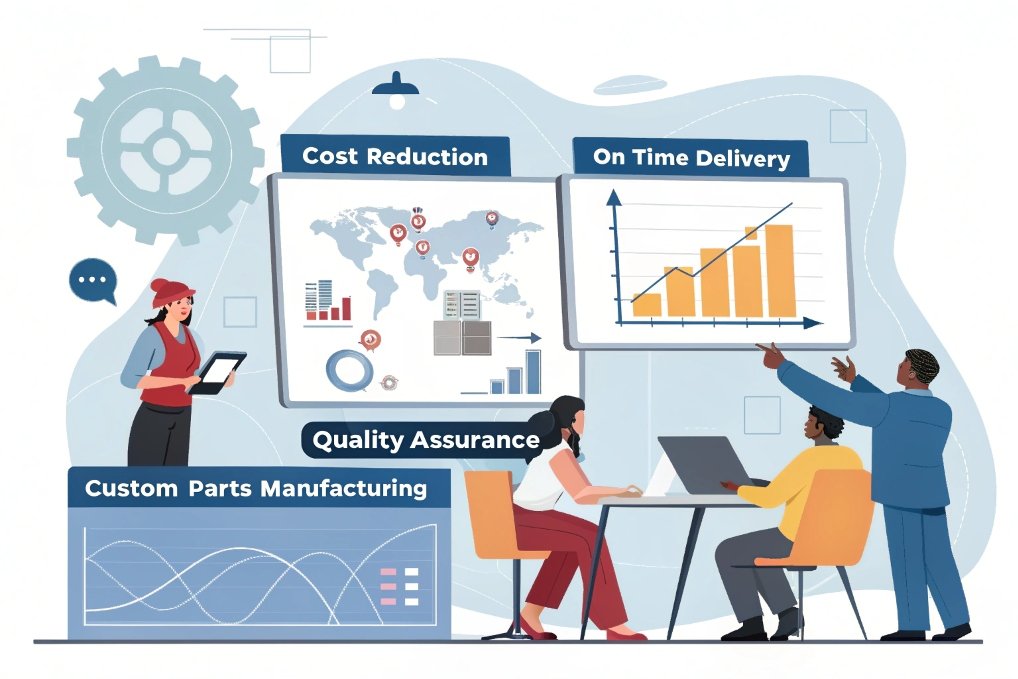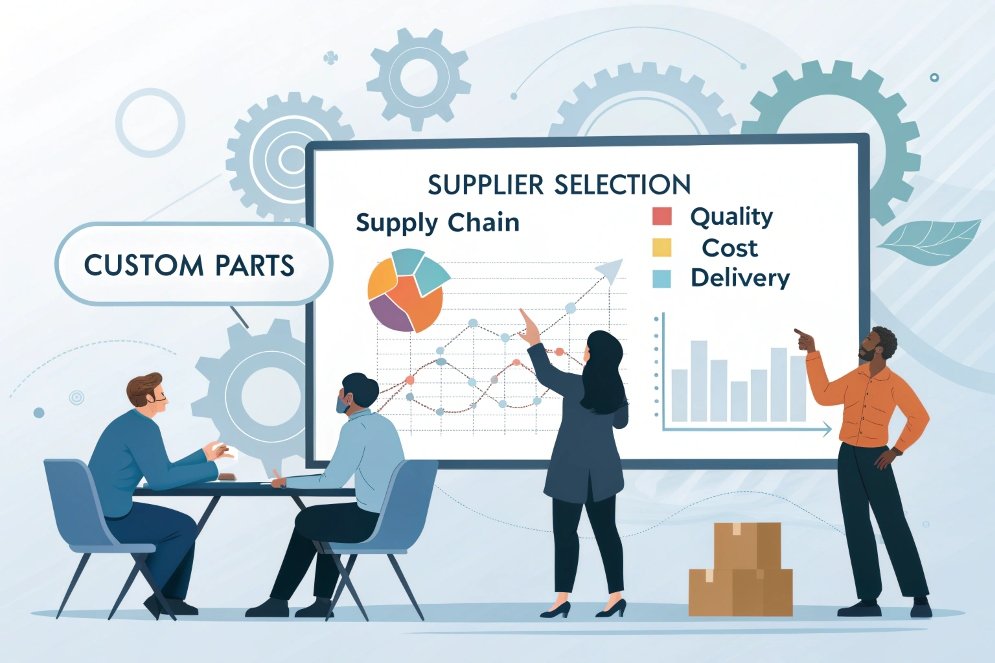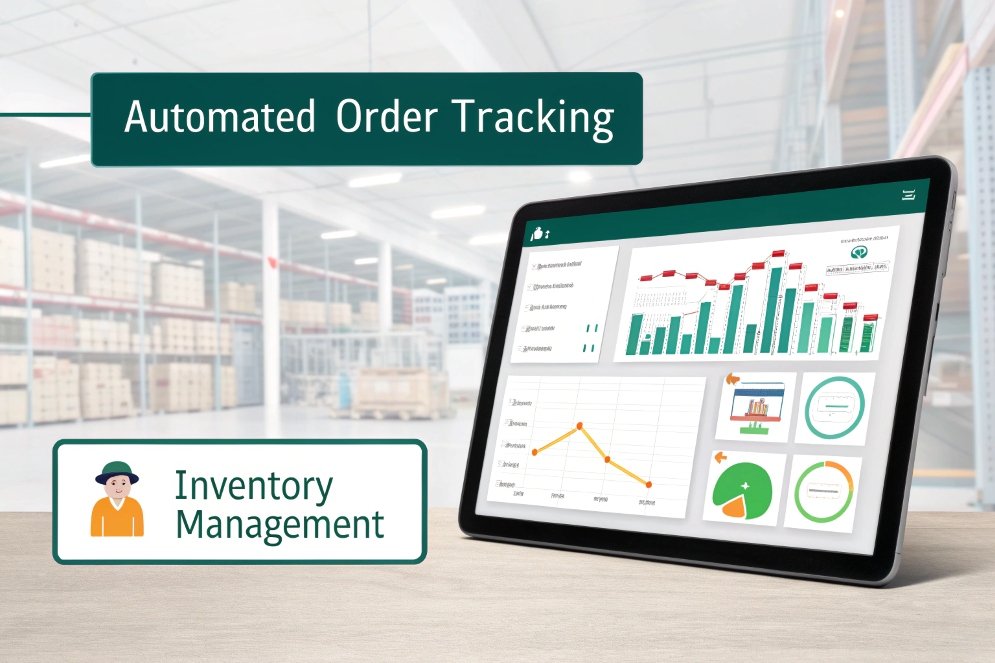
Building an efficient supply chain for custom parts is not a simple task, but it’s critical to ensuring that your business runs smoothly. Over the years, I’ve learned how essential it is to design a supply chain that ensures timely deliveries, minimizes costs, and maintains the highest quality standards. Having a reliable supply chain means you can focus more on innovation and less on solving logistical issues. Let’s dive into how you can build one that works for your business.
An effective supply chain for custom parts ensures smoother operations, reduced costs, and more predictable delivery timelines. By focusing on key elements such as supplier collaboration, clear communication, and streamlined processes, you can achieve greater efficiency in your business operations.
Through trial and error, I’ve seen the importance of having a well-structured and efficient supply chain. In this article, I’ll share the key elements of a successful supply chain and why collaboration with suppliers is at the heart of everything.
What Are the Key Elements of an Effective Supply Chain for Custom Parts?

An effective supply chain requires more than just finding the right suppliers. It’s about integrating all the moving parts to create a seamless process that delivers the right parts at the right time.
Key Elements of an Effective Supply Chain
| Element | Why It’s Important |
|---|---|
| Supplier Selection1 | Choosing reliable suppliers who can meet your quality, cost, and delivery requirements is essential for a strong supply chain. |
| Clear Communication Channels2 | Having open, honest communication at every stage ensures that both parties understand expectations and can address issues quickly. |
| Inventory Management3 | Effective management of raw materials and finished goods ensures that you never run out of stock, avoiding production delays. |
| Logistics and Shipping | Efficient shipping methods and reliable transportation partners minimize delays and reduce overall logistics costs. |
| Quality Control | Implementing rigorous quality checks ensures that custom parts meet the desired standards and prevents defective items from reaching customers. |
My Experience with Building an Effective Supply Chain
In my own experience, supplier selection was one of the most challenging parts of building an effective supply chain. In the beginning, I didn’t fully appreciate how much my supplier’s reliability would affect my overall operations. Over time, I learned the importance of working with suppliers who not only met quality standards but also communicated effectively and adhered to delivery schedules. These suppliers have since become key partners in helping streamline the entire process.
How Can You Streamline the Process to Ensure Timely and Cost-Effective Delivery?

Streamlining your supply chain process is all about identifying inefficiencies and eliminating them. Small adjustments to processes can lead to big savings in both time and cost.
Steps to Streamline the Supply Chain Process
| Step | What It Improves |
|---|---|
| Automate Ordering and Tracking | Implementing tools like inventory management systems helps track orders and reduce human error. |
| Consolidate Shipments | Combining shipments where possible reduces shipping costs and minimizes the chances of delays. |
| Build Strong Partnerships | Establishing solid relationships with your suppliers helps to negotiate better lead times and costs. |
| Use Just-In-Time Inventory | A just-in-time (JIT) inventory system helps minimize excess inventory and storage costs while ensuring parts are available when needed. |
| Invest in Efficient Logistics | Partnering with reliable logistics providers ensures on-time delivery and reduced shipping delays. |
Streamlining Process: My Approach
When I first started, managing inventory felt like a balancing act. I was overstocking, which led to high storage costs, or understocking, which led to delays in production. It wasn’t until I implemented a more streamlined approach that I saw results. Automating parts of the process, like ordering and tracking, has been a game-changer. Partnering with a few key suppliers who understood my needs and offered quicker lead times helped tremendously in reducing shipping costs and delays.
Why Is Collaboration with Suppliers Essential to Building a Strong Supply Chain?

Collaboration with suppliers is the backbone of any successful supply chain. Without this, even the best logistics, inventory systems, and plans can fall apart.
Key Reasons Why Supplier Collaboration Is Critical
| Reason | How It Contributes to a Strong Supply Chain |
|---|---|
| Improved Lead Times | Suppliers who collaborate closely can adjust to production schedules and offer more reliable lead times. |
| Better Problem Resolution | Working with your suppliers allows for faster resolution of any issues that arise during production or delivery. |
| Shared Knowledge and Expertise | Suppliers may offer insights into improving processes, reducing costs, or finding new ways to increase quality. |
| Increased Flexibility | A close partnership with your suppliers means they can adapt quickly to changes in demand or order modifications. |
| Long-Term Stability | Collaborating with suppliers over time builds trust and leads to more consistent and predictable outcomes. |
My Experience with Supplier Collaboration
In my early days, I focused primarily on the transaction with suppliers—getting the order and then moving on. But over time, I learned that collaboration is where the real value lies. By working closely with my suppliers, I could address issues before they became problems and share insights that helped both parties improve. This collaboration has been key in building stronger relationships and ensuring more consistent results over time.
Conclusion
Building an effective supply chain for customized parts is an ongoing effort that requires careful planning, clear communication, and a strong collaboration with your suppliers. By focusing on key elements like supplier selection, inventory management, logistics, and quality control, you can streamline your processes to ensure cost-effective and timely delivery. Remember, the heart of a strong supply chain is collaboration. With the right partners, your supply chain can be a well-oiled machine that supports long-term success.
Understanding supplier selection can enhance your supply chain efficiency and reliability, ensuring quality and timely deliveries. ↩
Exploring communication strategies can help you streamline operations and resolve issues faster, leading to a more effective supply chain. ↩
Learning about inventory management techniques can prevent stockouts and optimize your supply chain, ensuring smooth operations. ↩

